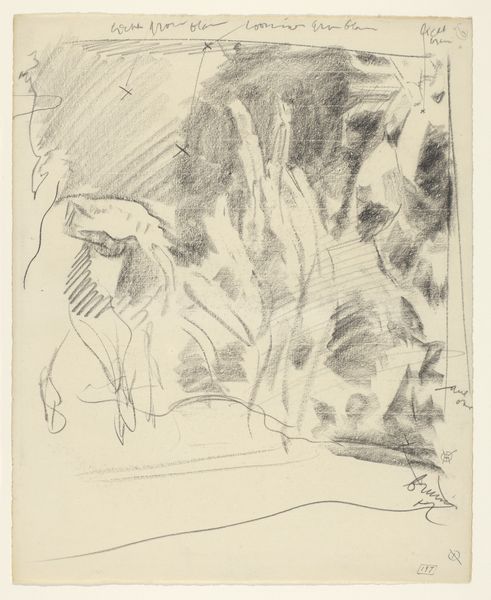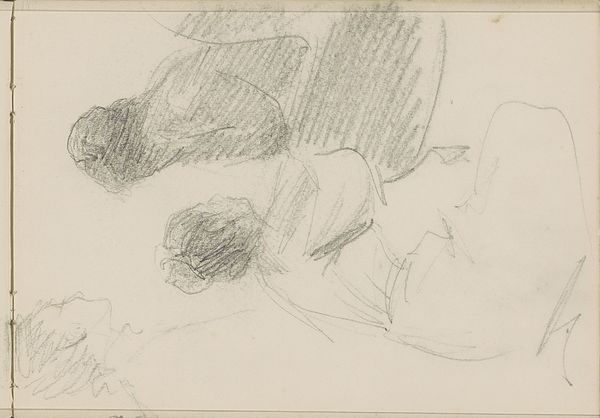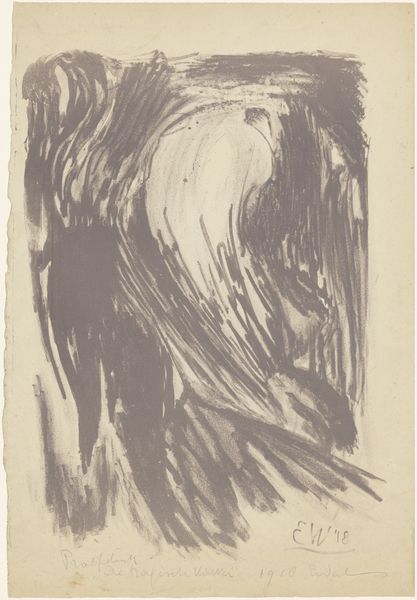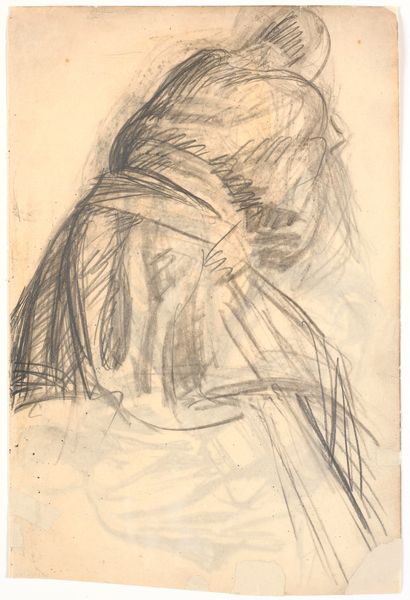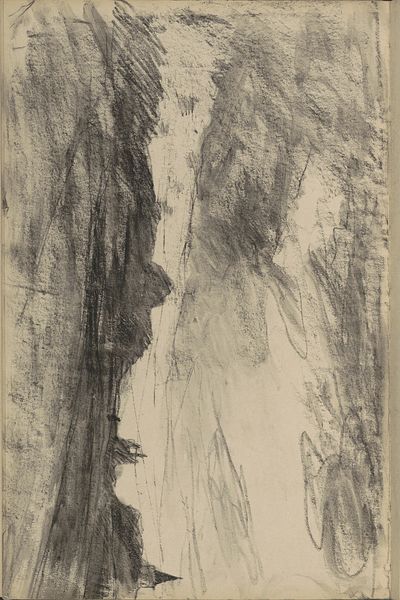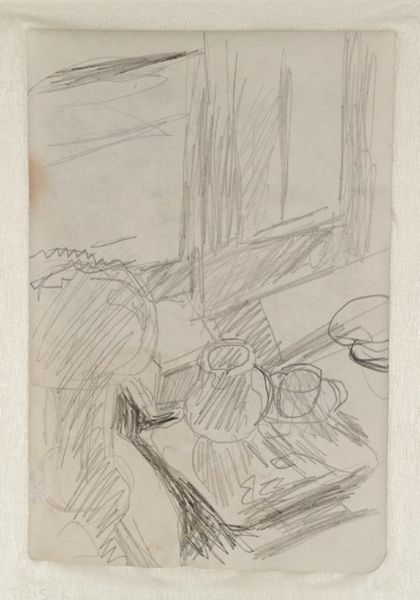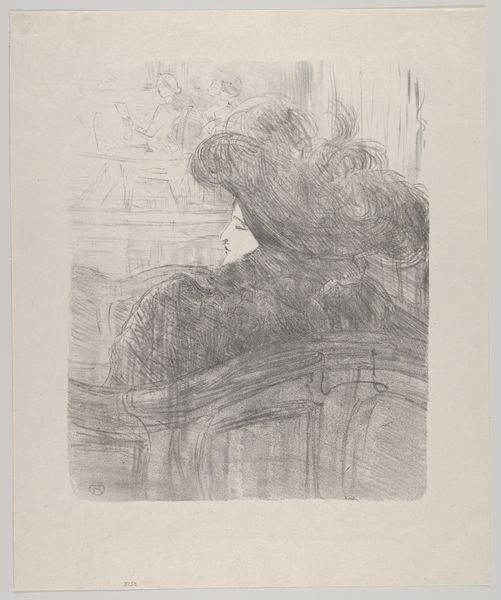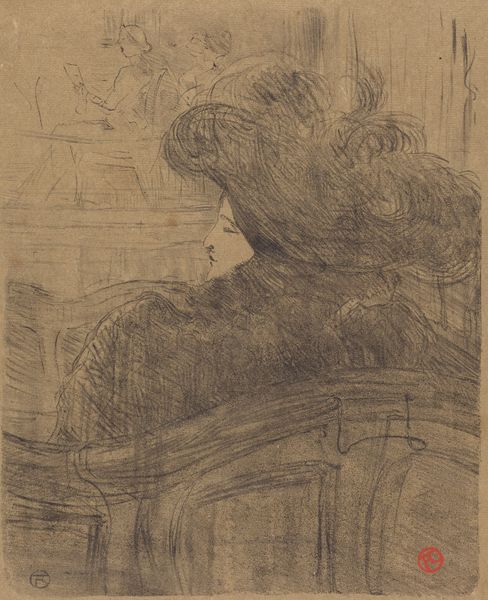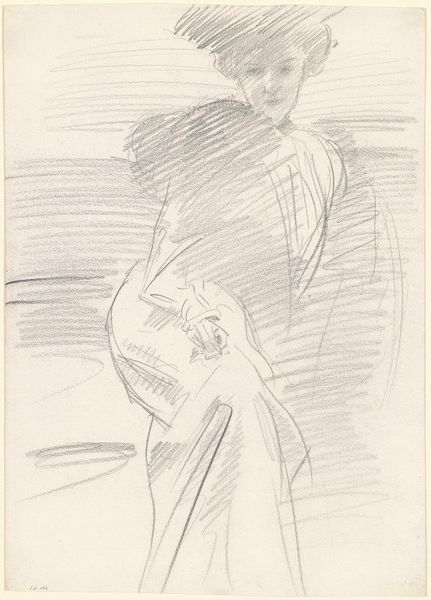
drawing, print, etching, engraving
#
drawing
# print
#
impressionism
#
etching
#
landscape
#
etching
#
figuration
#
line
#
engraving
Dimensions: 235 mm (height) x 207 mm (width) (bladmaal), 173 mm (height) x 120 mm (width) (plademaal)
Curator: This print, “Two Dancers in the Wings,” was created by Edgar Degas between 1873 and 1876 and is now part of the collection at the Statens Museum for Kunst. Degas worked with etching and engraving to make it. Editor: The image has an understated feel. At first, it’s kind of a blurry wash, then the figures begin to emerge out of all the hatching. There is this foreground element almost like a big bush, and the eye travels into the heart of the picture. The setting is very subdued. Curator: Subdued, yet filled with anticipatory energy! I'm drawn to the stark contrasts. The artist manipulates the etching lines to give a sense of shadow and light. I see more than just the ballet dancers: a convergence of potential. There is more in what is not represented, than what is represented. Editor: Agreed. These dancers waiting in the wings become a metaphor for so many things. What I find curious is how we are only allowed glimpses, the whole scene feels secretive. I find myself thinking of issues of access. Whose gaze are we adopting? Do we have backstage access in life and how does it form the social space? It makes me question those power dynamics. Curator: Definitely! The ‘wings’ space symbolizes that in-between state: not quite public, not quite private. This symbol carries deep meaning – of readiness, of incubation. But I feel that we must not over-complicate this image with only the discourse of power. There are more aspects too. It has much in common with the themes that are often associated with Impressionism. Editor: True. I do see that liminal space in terms of transition too. Whether in relation to gender identity, class mobility, artistic recognition... It really emphasizes how the margins are places of negotiation and transformation. Thank you for pointing that out; it broadens my understanding! Curator: You’re welcome! And in return, it reminds us that artworks carry multiple layers of meaning. A simple etching of dancers in the wings holds reflections of the times but still reverberates even now. Editor: Precisely, artworks persist as dynamic sites of interpretation, always capable of informing fresh critical insights in connection with both historical and ongoing conversations.
Comments
No comments
Be the first to comment and join the conversation on the ultimate creative platform.
